 W
WLars Valerian Ahlfors was a Finnish mathematician, remembered for his work in the field of Riemann surfaces and his text on complex analysis.
 W
WVladimir Igorevich Arnold was a Soviet and Russian mathematician. While he is best known for the Kolmogorov–Arnold–Moser theorem regarding the stability of integrable systems, he made important contributions in several areas including dynamical systems theory, algebra, catastrophe theory, topology, algebraic geometry, symplectic geometry, differential equations, classical mechanics, hydrodynamics and singularity theory, including posing the ADE classification problem, since his first main result—the solution of Hilbert's thirteenth problem in 1957 at the age of 19. He co-founded two new branches of mathematics—KAM theory, and topological Galois theory.
 W
WMichael Artin is an American mathematician and a professor emeritus in the Massachusetts Institute of Technology mathematics department, known for his contributions to algebraic geometry.
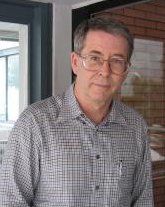 W
WMichael George Aschbacher is an American mathematician best known for his work on finite groups. He was a leading figure in the completion of the classification of finite simple groups in the 1970s and 1980s. It later turned out that the classification was incomplete, because the case of quasithin groups had not been finished. This gap was fixed by Aschbacher and Stephen D. Smith in 2004, in a pair of books comprising about 1300 pages. Aschbacher is currently the Shaler Arthur Hanisch Professor of Mathematics at the California Institute of Technology.
 W
WRaoul Bott was a Hungarian-American mathematician known for numerous basic contributions to geometry in its broad sense. He is best known for his Bott periodicity theorem, the Morse–Bott functions which he used in this context, and the Borel–Bott–Weil theorem.
 W
WAlberto Pedro Calderón was an Argentinian mathematician. His name is associated with the University of Buenos Aires, but first and foremost with the University of Chicago, where Calderón and his mentor, the analyst Antoni Zygmund, developed the theory of singular integral operators. This created the "Chicago School of (hard) Analysis".
 W
WLennart Axel Edvard Carleson is a Swedish mathematician, known as a leader in the field of harmonic analysis. One of his most noted accomplishments is his proof of Lusin's conjecture.
 W
WHenri Paul Cartan was a French mathematician who made substantial contributions to algebraic topology. He was the son of the French mathematician Élie Cartan and the brother of composer Jean Cartan.
 W
WShiing-Shen Chern was a Chinese-American mathematician and poet. He made fundamental contributions to differential geometry and topology. He has been called the "father of modern differential geometry" and is widely regarded as a leader in geometry and one of the greatest mathematicians of the twentieth century, winning numerous awards and recognition including the Wolf Prize and the inaugural Shaw Prize. In memory of Shiing-Shen Chern, the International Mathematical Union established the Chern Medal in 2010 to recognize "an individual whose accomplishments warrant the highest level of recognition for outstanding achievements in the field of mathematics".
 W
WEnnio De Giorgi was an Italian mathematician, member of the House of Giorgi, who worked on partial differential equations and the foundations of mathematics.
 W
WPierre René, Viscount Deligne is a Belgian mathematician. He is best known for work on the Weil conjectures, leading to a complete proof in 1973. He is the winner of the 2013 Abel Prize, 2008 Wolf Prize, 1988 Crafoord Prize, and 1978 Fields Medal.
 W
WSamuel Eilenberg was a Polish-American mathematician who co-founded category theory and Homological Algebra.
 W
WPaul Erdős was a renowned Hungarian mathematician. He was one of the most prolific mathematicians and producers of mathematical conjectures of the 20th century. He was known both for his social practice of mathematics and for his eccentric lifestyle. He devoted his waking hours to mathematics, even into his later years—indeed, his death came only hours after he solved a geometry problem at a conference in Warsaw.
 W
WCharles Louis Fefferman is an American mathematician at Princeton University, where he is currently the Herbert E. Jones, Jr. '43 University Professor of Mathematics. His primary field of research is mathematical analysis.
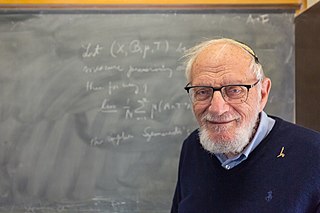 W
WHillel (Harry) Furstenberg is an American-Israeli mathematician and professor emeritus at the Hebrew University of Jerusalem. He is a member of the Israel Academy of Sciences and Humanities and U.S. National Academy of Sciences and a laureate of the Abel Prize and the Wolf Prize in Mathematics. He is known for his application of probability theory and ergodic theory methods to other areas of mathematics, including number theory and Lie groups.
 W
WIsrael Moiseevich Gelfand, also written Israïl Moyseyovich Gel'fand, or Izrail M. Gelfand was a prominent Soviet mathematician. He made significant contributions to many branches of mathematics, including group theory, representation theory and functional analysis. The recipient of many awards, including the Order of Lenin and the first Wolf Prize, he was a Foreign Fellow of the Royal Society and professor at Moscow State University and, after immigrating to the United States shortly before his 76th birthday, at Rutgers University. Gelfand is also a 1994 MacArthur Fellow.
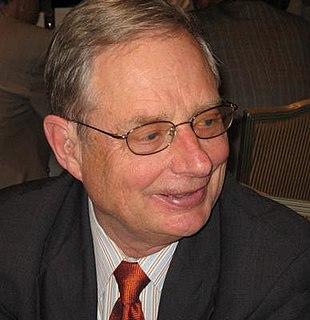 W
WPhillip Augustus Griffiths IV is an American mathematician, known for his work in the field of geometry, and in particular for the complex manifold approach to algebraic geometry. He was a major developer in particular of the theory of variation of Hodge structure in Hodge theory and moduli theory. He also worked on partial differential equations, coauthored with Shiing-Shen Chern, Robert Bryant and Robert Gardner on Exterior Differential Systems.
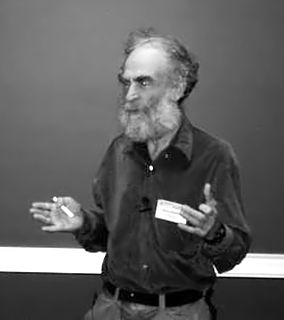 W
WMikhael Leonidovich Gromov is a Russian-French mathematician known for his work in geometry, analysis and group theory. He is a permanent member of IHÉS in France and a Professor of Mathematics at New York University.
 W
WFriedrich Ernst Peter Hirzebruch ForMemRS was a German mathematician, working in the fields of topology, complex manifolds and algebraic geometry, and a leading figure in his generation. He has been described as "the most important mathematician in Germany of the postwar period."
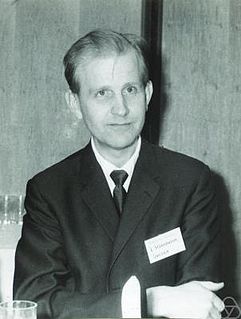 W
WLars Valter Hörmander was a Swedish mathematician who has been called "the foremost contributor to the modern theory of linear partial differential equations". He was awarded the Fields Medal in 1962, the Wolf Prize in 1988, and the Leroy P. Steele Prize in 2006. His Analysis of Linear Partial Differential Operators I–IV is considered a standard work on the subject of linear partial differential operators.
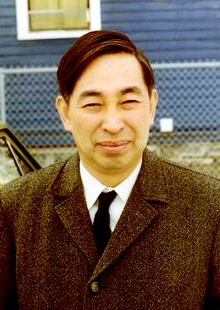 W
WKiyosi Itô was a Japanese mathematician.
 W
WKunihiko Kodaira was a Japanese mathematician known for distinguished work in algebraic geometry and the theory of complex manifolds, and as the founder of the Japanese school of algebraic geometers. He was awarded a Fields Medal in 1954, being the first Japanese national to receive this honour.
 W
WAndrey Nikolaevich Kolmogorov was a Soviet mathematician who made significant contributions to the mathematics of probability theory, topology, intuitionistic logic, turbulence, classical mechanics, algorithmic information theory and computational complexity.
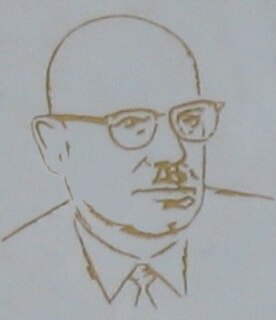 W
WMark Grigorievich Krein was a Soviet Jewish mathematician, one of the major figures of the Soviet school of functional analysis. He is known for works in operator theory, the problem of moments, classical analysis and representation theory.
 W
WRobert Phelan Langlands, is an American-Canadian mathematician. He is best known as the founder of the Langlands program, a vast web of conjectures and results connecting representation theory and automorphic forms to the study of Galois groups in number theory, for which he received the 2018 Abel Prize. He is an emeritus professor and occupies Albert Einstein's office at the Institute for Advanced Study in Princeton.
 W
WPeter David Lax is a Hungarian-born American mathematician working in the areas of pure and applied mathematics.
 W
WJean Leray was a French mathematician, who worked on both partial differential equations and algebraic topology.
 W
WHans Lewy was a Jewish German born American mathematician, known for his work on partial differential equations and on the theory of functions of several complex variables.
 W
WLászló Lovász is a Hungarian mathematician, best known for his work in combinatorics, for which he was awarded the Wolf Prize and the Knuth Prize in 1999, and the Kyoto Prize in 2010. He was the president of the Hungarian Academy of Sciences between 2014 and 2020. He served as president of the International Mathematical Union between January 1, 2007 and December 31, 2010.
 W
WGrigory Aleksandrovich Margulis is a Russian-American mathematician known for his work on lattices in Lie groups, and the introduction of methods from ergodic theory into diophantine approximation. He was awarded a Fields Medal in 1978, a Wolf Prize in Mathematics in 2005, and an Abel Prize in 2020, becoming the fifth mathematician to receive the three prizes. In 1991, he joined the faculty of Yale University, where he is currently the Erastus L. De Forest Professor of Mathematics.
 W
WJohn Willard Milnor is an American mathematician known for his work in differential topology, K-theory and dynamical systems. Milnor is a distinguished professor at Stony Brook University and one of the six mathematicians to have won the Fields Medal, the Wolf Prize, and the Abel Prize.
 W
WJürgen Kurt Moser was a German-American mathematician, honored for work spanning over four decades, including Hamiltonian dynamical systems and partial differential equations.
 W
WDavid Bryant Mumford is an American mathematician known for distinguished work in algebraic geometry, and then for research into vision and pattern theory. He won the Fields Medal and was a MacArthur Fellow. In 2010 he was awarded the National Medal of Science. He is currently a University Professor Emeritus in the Division of Applied Mathematics at Brown University.
 W
WIlya Piatetski-Shapiro was a Soviet-born Israeli mathematician. During a career that spanned 60 years he made major contributions to applied science as well as pure mathematics. In his last forty years his research focused on pure mathematics; in particular, analytic number theory, group representations and algebraic geometry. His main contribution and impact was in the area of automorphic forms and L-functions.
 W
WPeter Clive Sarnak is a South African-born mathematician with dual South-African and American nationalities. Sarnak has been a member of the permanent faculty of the School of Mathematics at the Institute for Advanced Study since 2007. He is also Eugene Higgins Professor of Mathematics at Princeton University since 2002, succeeding Andrew Wiles, and is an editor of the Annals of Mathematics. He is known for his work in analytic number theory. He also sits on the Board of Adjudicators and the selection committee for the Mathematics award, given under the auspices of the Shaw Prize.
 W
WAtle Selberg was a Norwegian mathematician known for his work in analytic number theory and the theory of automorphic forms, and in particular for bringing them into relation with spectral theory. He was awarded the Fields Medal in 1950.
 W
WJean-Pierre Serre is a French mathematician who has made contributions to algebraic topology, algebraic geometry, and algebraic number theory. He was awarded the Fields Medal in 1954, the Wolf Prize in 2000 and the inaugural Abel Prize in 2003.
 W
WSaharon Shelah is an Israeli mathematician. He is a professor of mathematics at the Hebrew University of Jerusalem and Rutgers University in New Jersey.
 W
WCarl Ludwig Siegel was a German mathematician specialising in analytic number theory. He is known for, amongst other things, his contributions to the Thue–Siegel–Roth theorem in Diophantine approximation and the Siegel mass formula for quadratic forms. He was named as one of the most important mathematicians of the 20th century.
 W
WYakov Grigorevich Sinai is a Russian mathematician known for his work on dynamical systems. He contributed to the modern metric theory of dynamical systems and connected the world of deterministic (dynamical) systems with the world of probabilistic (stochastic) systems. He has also worked on mathematical physics and probability theory. His efforts have provided the groundwork for advances in the physical sciences.
 W
WStephen Smale is an American mathematician, known for his research in topology, dynamical systems and mathematical economics. He was awarded the Fields Medal in 1966 and spent more than three decades on the mathematics faculty of the University of California, Berkeley.
 W
WElias Menachem Stein was an American mathematician who was a leading figure in the field of harmonic analysis. He was the Albert Baldwin Dod Professor of Mathematics, Emeritus, at Princeton University, where he was a faculty member from 1963 until his death in 2018.
 W
WJohn Torrence Tate Jr. was an American mathematician, distinguished for many fundamental contributions in algebraic number theory, arithmetic geometry and related areas in algebraic geometry. He was awarded the Abel Prize in 2010.
 W
WJohn Griggs Thompson is a mathematician at the University of Florida noted for his work in the field of finite groups. He was awarded the Fields Medal in 1970, the Wolf Prize in 1992 and the 2008 Abel Prize.
 W
WJacques Tits is a Belgium-born French mathematician who works on group theory and incidence geometry. He introduced Tits buildings, the Tits alternative, the Tits group, and the Tits metric.
 W
WAndré Weil was a French mathematician, known for his foundational work in number theory and algebraic geometry. He was a founding member and the de facto early leader of the mathematical Bourbaki group. The philosopher Simone Weil was his sister. The writer Sylvie Weil is his daughter.
 W
WHassler Whitney was an American mathematician. He was one of the founders of singularity theory, and did foundational work in manifolds, embeddings, immersions, characteristic classes, and geometric integration theory.
 W
WSir Andrew John Wiles is an English mathematician and a Royal Society Research Professor at the University of Oxford, specializing in number theory. He is best known for proving Fermat's Last Theorem, for which he was awarded the 2016 Abel Prize and the 2017 Copley Medal by the Royal Society. He was appointed Knight Commander of the Order of the British Empire in 2000, and in 2018 was appointed as the first Regius Professor of Mathematics at Oxford. Wiles is also a 1997 MacArthur Fellow.
 W
WOscar Zariski was a Russian-born American mathematician and one of the most influential algebraic geometers of the 20th century.